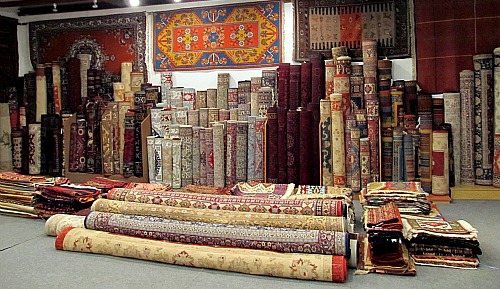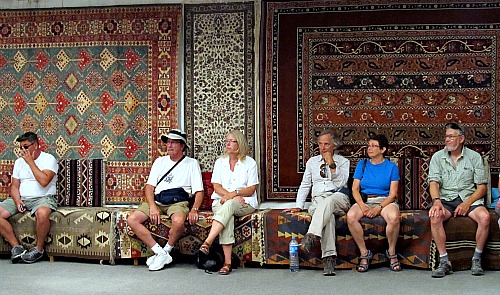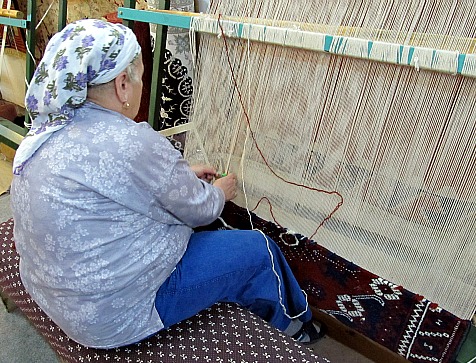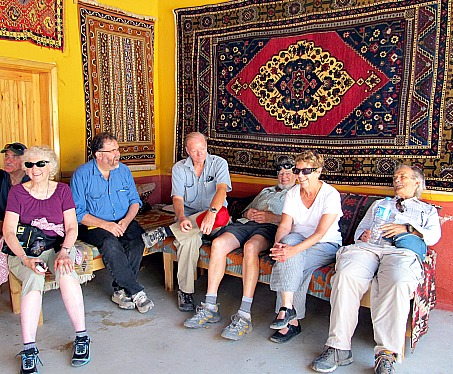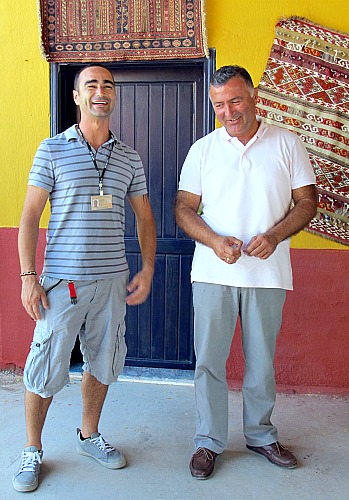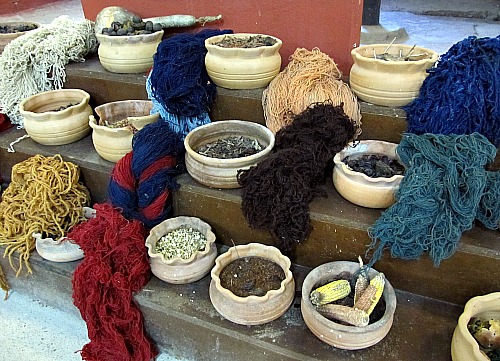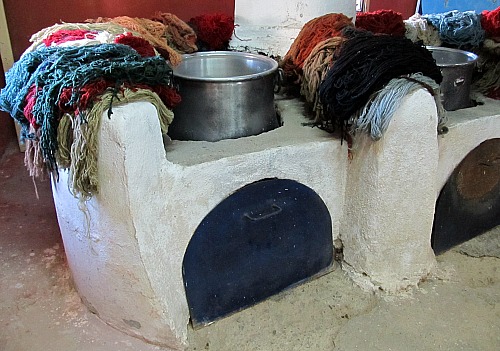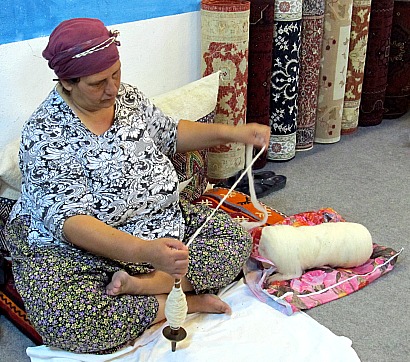We were already spellbound when next we were led towards the grand display room. At the entrance, one carpet presented on an easel drew Gino and me like a magnet: an intricate creation in silk depicting a dancing woman and musicians. It was gorgeous and we were ga-ga over it.
I about wept when I learned that the price tag was $20,000! Still, our eyes kept wandering to it. I was trying to figure out what I could sell in order to afford it. My first-born, maybe? (Nah. He’s priceless.) I finally forced myself to give up the thought of taking it home.
Luckily, we were soon distracted after being shuffled into a huge room completely covered with rugs. They were everywhere: standing in rolls, covering the walls and the floors, and layered on top of each other. We were also sitting on them since the benches surrounding the showroom on three sides were also carpet-covered. We sat mute and mesmerized while the salesmen served us tea — a delicious, magical elixir that made you want to buy carpets.
I was relieved to know that we had not been somehow tricked, sequestered in this showroom while being bombarded by some high-pressure sales pitch. There was simply an informative explanation and description of the different types of rugs and the meanings of their various symbols and colors.
Then we were left to wander and look on our own. Aside from the main display room, several other smaller rooms contained rugs of various kinds.
But we kept going back to one rug in particular that we had spotted in the main room.
Of course, we bought it. I took pictures of it before it was rolled off and prepared for shipping. It arrived on our doorstep a couple of weeks after our return home.
This special rug now illuminates our living room, resting on a dark wood coffee table, a piece of art not to be walked on, but lovingly displayed. Every time I see it I think of Turkey. And that’s every day.


